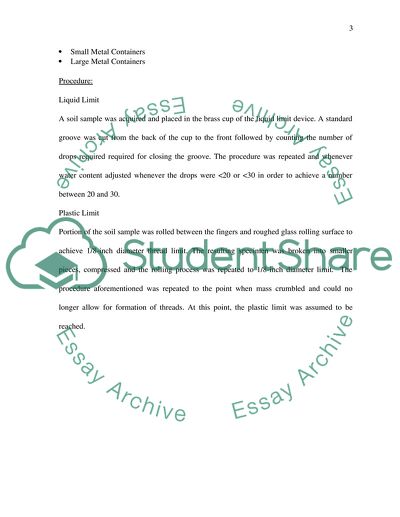Liquid limit Lab Report Example | Topics and Well Written Essays - 750 words. Retrieved from https://studentshare.org/miscellaneous/1681940-liquid-limit
Liquid Limit Lab Report Example | Topics and Well Written Essays - 750 Words. https://studentshare.org/miscellaneous/1681940-liquid-limit.


